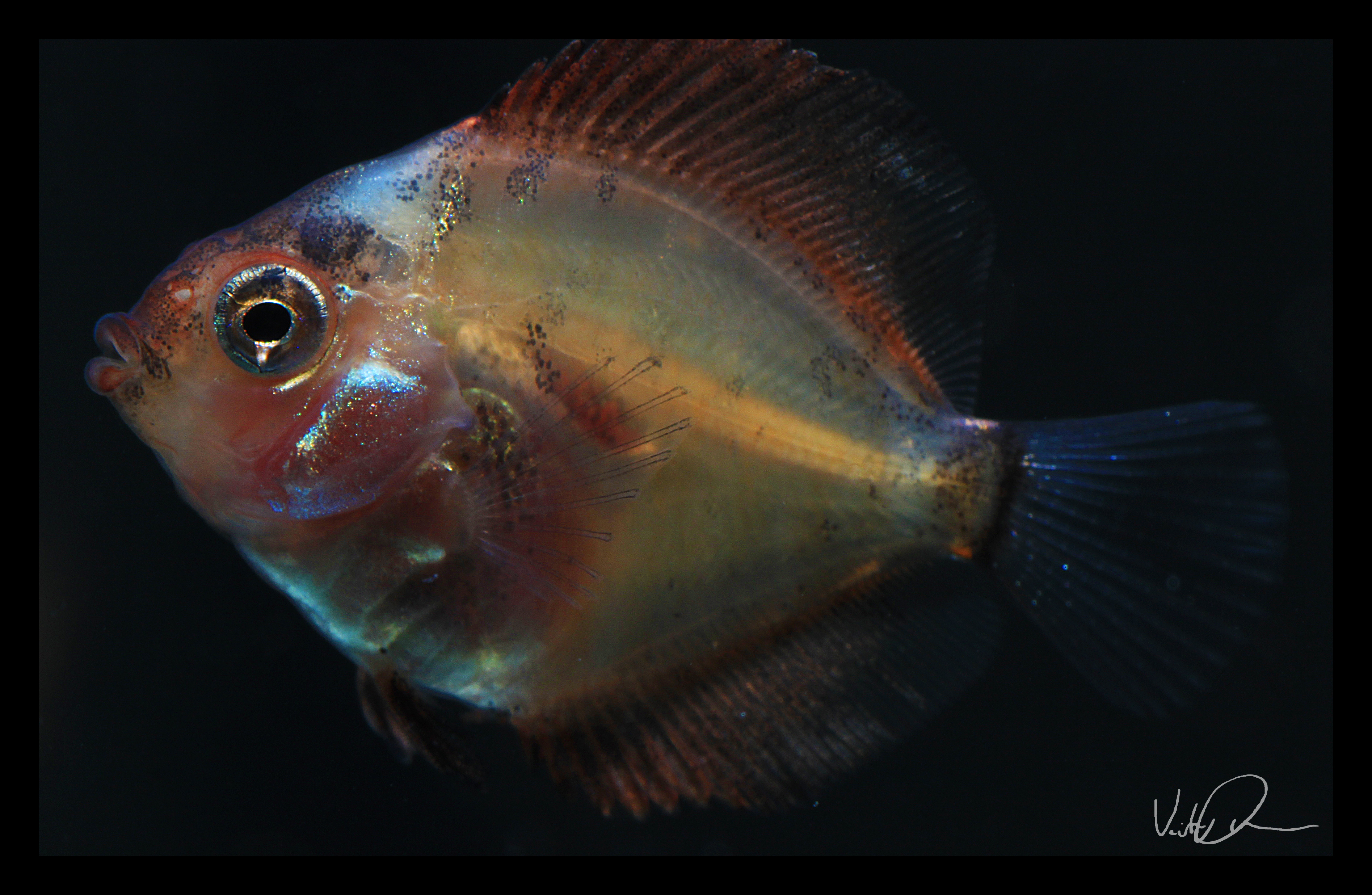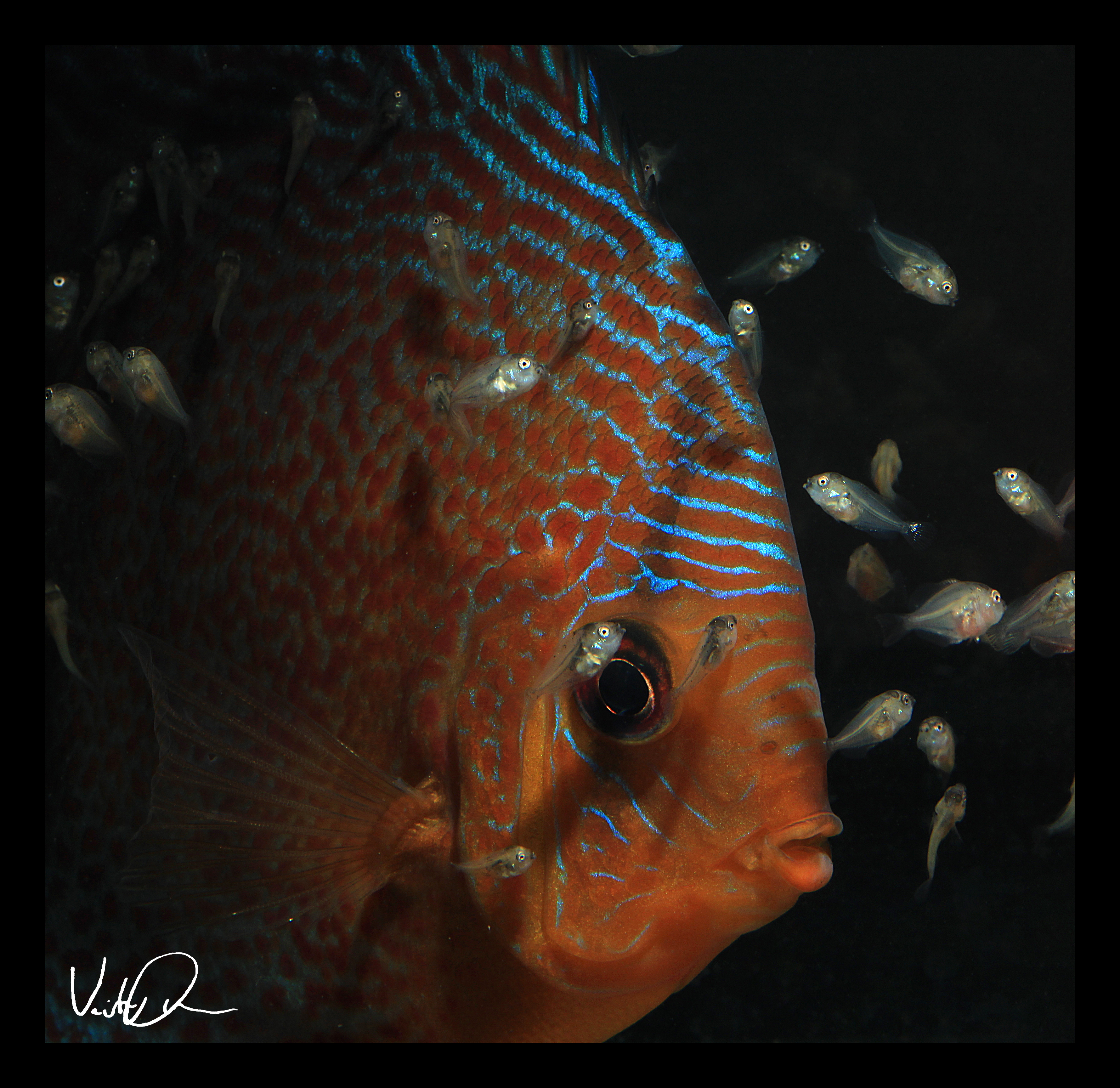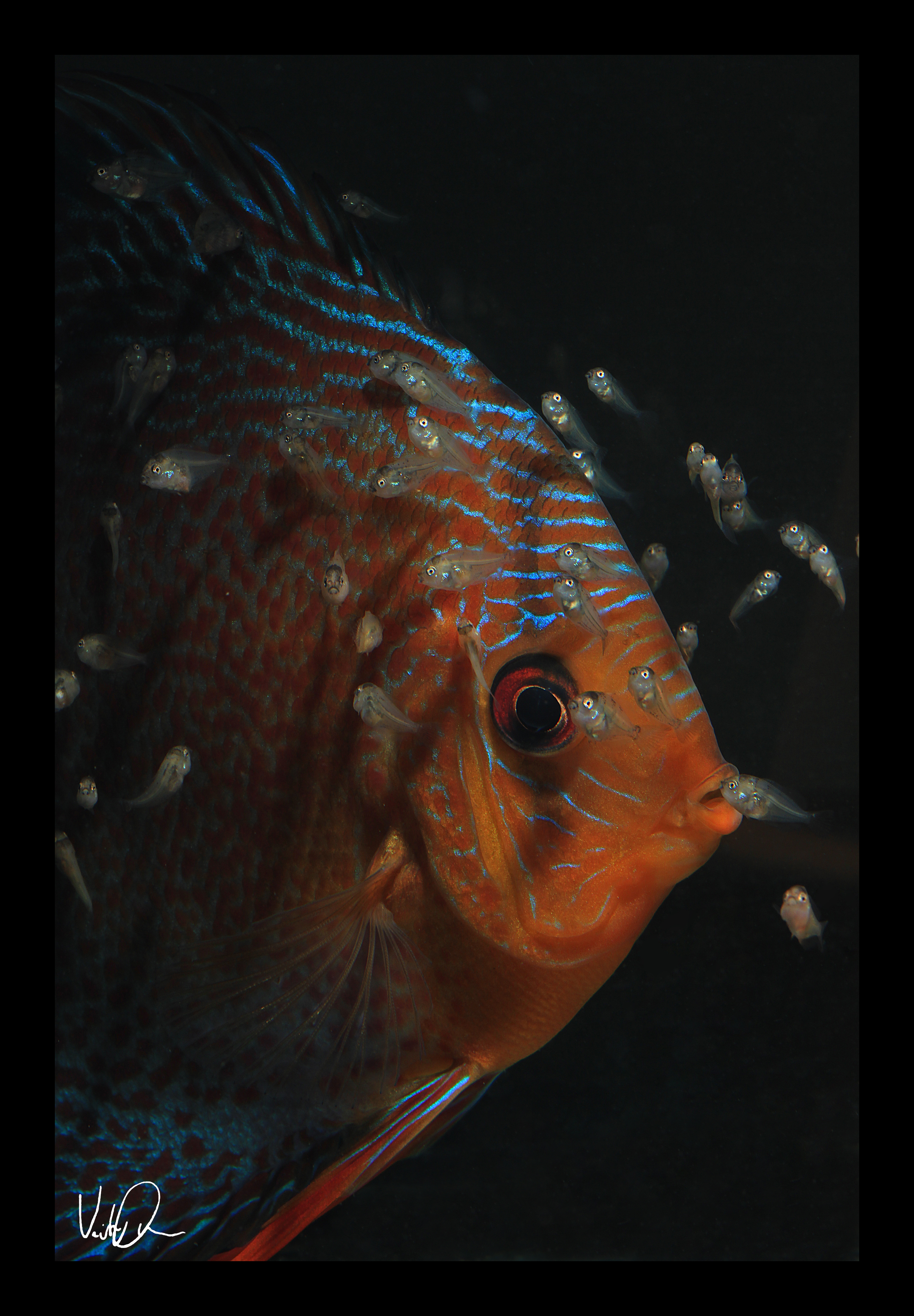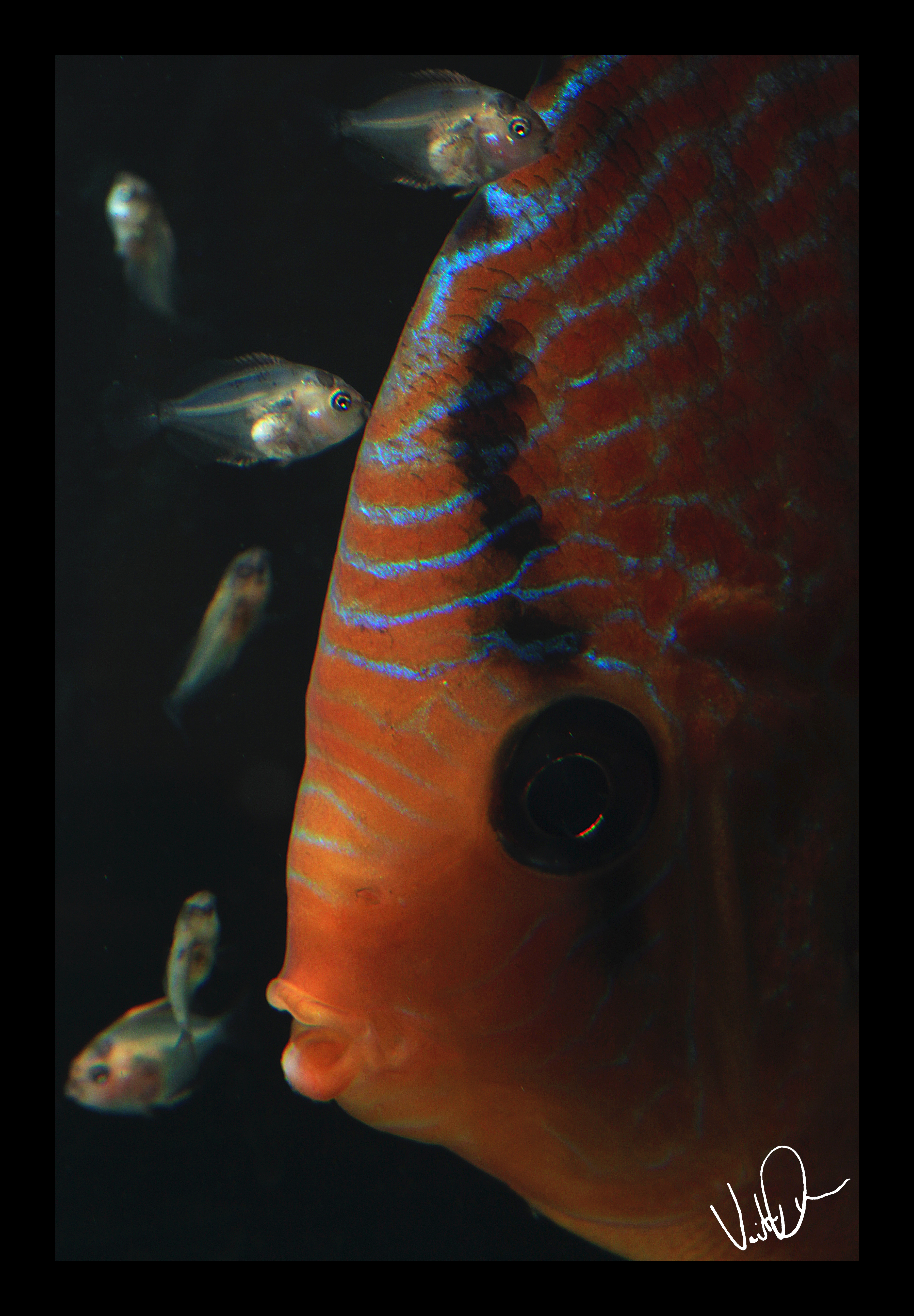See fullsize image here
Fish babies that is (hey, they celebrate too..... I'd guess). The above is an image of a young 20-day free-swimming Discus fry.
Read more after the jump!
Now, fish photography is often considered a daunting task with low light, fast action and glass/water distortion leading to blurry and out of focus images. First, let's start with why many aquatic images often turn out that way! Given any of your camera's intelligent or auto modes, the camera will survey the scene and determine what the ambient lighting conditions are like. Cameras are very smart, and will translate the poorly lit scene into a programmed bunch of settings to give you, the photographer, a properly exposed image. Being a comparably low light scene (the aquarium) the camera will more than likely select a low f-stop/wide aperture which will allow for more light to reach the sensor. It will also most likely select a shutter speed on the very slow side, possibly too slow to get a sharp image handheld, let alone freeze action. The camera is smart, but, it will not take in the context of the scene. The above settings are a recipe for blurry (but well exposed) fish images.
Firstly, while a low f-stop/wide aperture will allow for more light to get to the sensor, it will yield a shallow depth of field. Why is this important? Because your fish move. Shooting at a higher f-stop not only allows you to capture more of the fish in focus, but it also gives some room for error when it comes to focus. At a low f-stop, or wide aperture, the plane of focus is narrower, often so narrow that only a slice of the fish may be in focus, and if you miss- even by a little bit, your fish will be out of focus.
The shutter speed is arguably the most important setting to pay attention to when shooting not only fish, but any type of action. The shutter speed will be what allows you to freeze action in the frame. By freeze action I am referring to the ability to make a moving object/subject appear to be still or "frozen". This is achieved by increasing the shutter speed to a point where while the sensor is "seeing" light the subject moves very little or not at all. I find for fish this is often around the 1/100 sec mark. This depends on what fish you are photographing, however, I would follow one simple guideline as to how slow to go: Always try to shoot with a shutter speed at least as fast as 1/focal distance. So, if your lens is at a focal length of 55mm, shoot faster than 1/55th of a second. This is to prevent the image blur from camera shake (blur in your image caused by the natural movement of your hands holding the camera). Of course this varies depending on if you have shaky hands or if your lens is "Image Stabilized" (IS/VC/OS... etc), but is a good starting point.
Now, getting these two setting optimized is difficult to do when capturing images of fish because of the lack of available light (yes, even many "high tech" planted tanks lack enough light). You, as the photographer, will have to do one of two things:
- Make it look there there is more light by sacrificing setting. Either drop f-stop, decrease shutter speed or increase your ISO. I will often start with the last option as many cameras now have very good high ISO noise reduction and programs like photoshop or lightroom have very good noise reduction tools.
- Increase the amount of light.
Option 2 is a little more difficult, but use light wisely and it can make a huge difference. Consider how much water the light will have to travel through and try to predict where you will be shooting the fish. Place your lighting source wherever the shortest distance is to optimize it's impact. Sometimes this will be lighting from above the tank, but often it will be from the side. Type of lighting matters as well. The stronger the better. I will recommended speedlights, but stronger desk lamps or light strips will also work. The idea is to introduce more light, or use your currently available light more wisely.
The following images were captured with a speedlight from about 45 degrees above/forward and using a 90mm macro lens. This allows me to get closer to the fish and really get the details of the fry. Using a macro lens will, however, increase the effect that aperture will have on the depth of field. I had to shoot at around f/16 to get usable depth of field. While macro lenses are nice to pick out details on smaller fish, consider other lenses for fish photography to maximize how you can use light. I will often use my 70-200mm f/4 or 50mm f/1.8 for fish photography. This allows me to use a lower aperture and maximize light usage, as well as shoot from further away from the tank which I find means the fish hide less.
See fullsize image here
See fullsize image here
See fullsize image here
See fullsize image here
See fullsize image here
Remember: Lighting is everything in photography. At the core of every great image is even better lighting.
Editing on all images are courtesy of my girlfriend: Tianna!







No comments:
Post a Comment